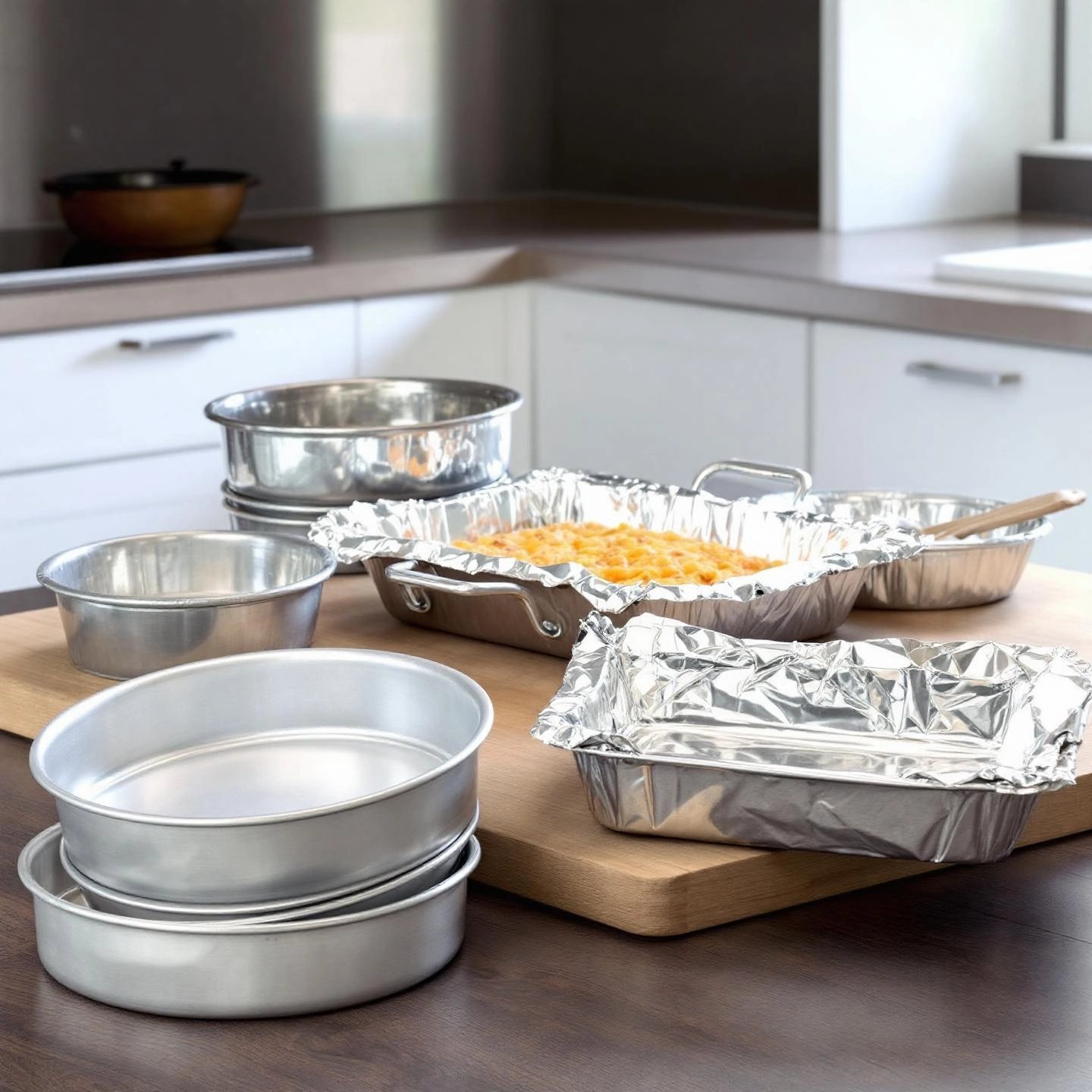
Have you ever wondered why so many home cooks and professional chefs reach for an aluminum pan when preparing their favorite meals? Imagine you’re in your kitchen, about to whip up a quick stir-fry or bake a batch of brownies. You want a pan that heats up quickly, cooks evenly, and doesn’t weigh a ton. That’s where aluminum pans come in—and why they’ve become a staple in kitchens around the world.
Aluminum pans are valued for their unique blend of practicality and performance. Here’s what sets them apart:
But that’s just the beginning. In this comprehensive guide, you’ll learn:
Whether you’re a beginner learning the basics or an experienced chef looking to refine your skills, this guide is designed to be accessible, informative, and practical. You’ll discover tips, comparisons, and expert advice to help you get the most from your aluminum pans for cooking. Ready to find out why this humble kitchen tool deserves a spot in your culinary lineup? Let’s get started!
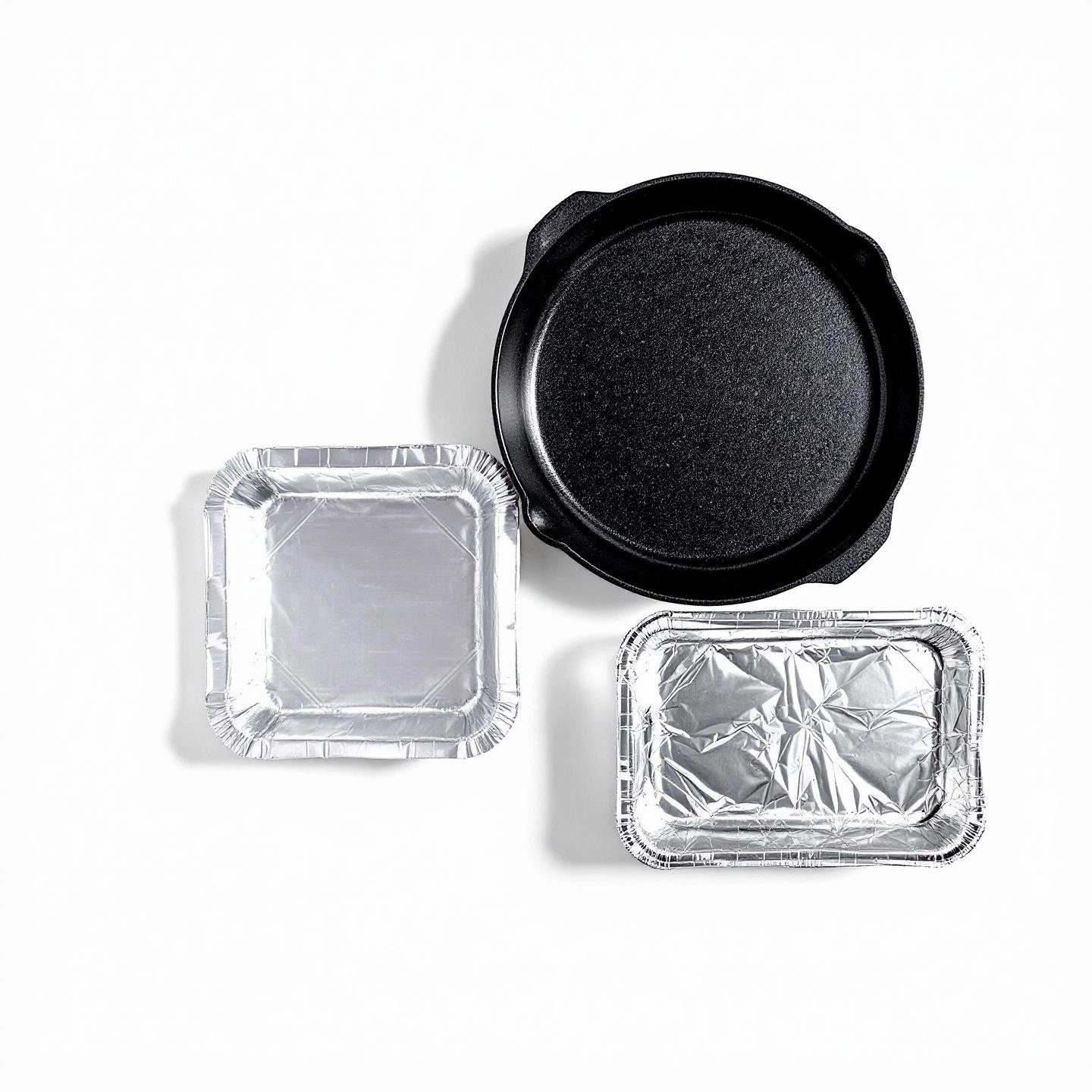
When you open your kitchen cabinet, do you ever wonder why some pans feel heavier, look sleeker, or seem to last longer than others? The answer often lies in the type of aluminum pan you’re using. Let’s break down the three main categories—cast, anodized, and disposable—so you can make the best choice for your cooking style and needs.
Before diving into the unique features of each type, it helps to know a bit about how these pans are manufactured. The process can involve:
Each method results in distinct properties, durability, and uses in the kitchen.
Imagine a pan that feels solid in your hand and holds heat evenly—this is the trademark of a cast aluminum pan. These pans are made by pouring molten aluminum into a mold, resulting in a thicker, heavier product compared to stamped pans.
If you’re looking for a pan that can handle daily use and provide steady, reliable performance, a cast aluminum pan is a solid choice [The Rational Kitchen].
Ever wondered why some aluminum pans have a sleek, dark finish and seem almost impossible to scratch? That’s the magic of the anodized aluminum pan. Through a special electrochemical process called anodizing, the surface of the aluminum is transformed into a tough, integrated layer that won’t chip, peel, or flake.
What sets anodized pans apart is the advanced manufacturing process. Industry leaders like Shengxin Aluminum use state-of-the-art technology to ensure a consistent, durable finish. Their investment in quality control and process innovation means you get pans that last longer and perform better, whether you’re a home cook or a professional chef [Shengxin Aluminum].
Picture your last family gathering or potluck—chances are, you saw a few disposable aluminum pans loaded with lasagna or brownies. These pans are stamped from thin sheets of aluminum, making them lightweight and inexpensive.
While disposable pans are a lifesaver for events, they aren’t built for daily cooking or high-heat applications.
When deciding which aluminum pan is right for you, consider:
With these insights, you can confidently select the aluminum pan that best matches your kitchen needs. Next, we’ll compare aluminum with stainless steel cookware to help you refine your choice even further.
When you’re standing in the cookware aisle, the choice between an aluminum pan vs stainless steel can feel overwhelming. Do you grab the lightweight, shiny aluminum, or opt for the sturdy, classic look of stainless steel? Let’s break down the differences so you can confidently choose the best aluminum pan or stainless steel cookware for your unique cooking style.
Imagine you’re sautéing vegetables for a quick weeknight dinner. You want your pan to heat up fast and cook your food evenly. Or maybe you’re simmering a tomato sauce and need a pan that won’t react with acidic ingredients. The right material makes all the difference. Here’s how aluminum and stainless steel stack up:
| Feature | Aluminum Pan | Stainless Steel Pan |
|---|---|---|
| Heat Conductivity | Excellent – heats up quickly and distributes heat evenly, reducing hot spots. Perfect for fast, precise cooking. | Good – slower to heat and may have uneven spots unless it has an aluminum or copper core. Great for simmering and browning. |
| Weight | Lightweight – easy to handle, lift, and pour, especially for larger pans or when cooking multiple dishes. | Moderate – heavier than aluminum but still manageable. Some prefer the extra weight for stability. |
| Durability | Less durable – prone to scratches, dents, and warping. Anodized versions improve durability. | Highly durable – resistant to scratches, dents, and rust. Designed for long-term, frequent use. |
| Food Reactivity | Can react with acidic or alkaline foods, affecting taste and appearance. Anodized or coated pans prevent this. | Non-reactive – safe for all foods, including tomatoes and citrus. No flavor transfer or discoloration. |
| Price | Budget-friendly – typically less expensive than stainless steel. Great for outfitting a kitchen on a budget. | Higher cost – especially for multi-layer or professional-grade pans. Considered a long-term investment. |
| Maintenance | Requires gentle handwashing; not always dishwasher safe. Susceptible to discoloration if not cared for properly. | Easy to clean – dishwasher safe, resists staining, and tolerates most detergents. Low-maintenance for busy kitchens. |
Some cooks even mix and match: using aluminum for fast, high-heat tasks and stainless steel for slow-cooking or acidic dishes. If you’re looking for the best of both worlds, consider stainless steel pans with an aluminum core—these offer the rapid heating of aluminum and the durability of stainless steel [Vinod Cookware].
Ultimately, the best cookware is the one that fits your cooking habits and makes meal prep enjoyable. Next, we’ll address common health questions about aluminum pans and how to use them safely in your kitchen.
When you pull out an aluminum pan for tonight’s dinner, do you ever pause and wonder, “Are aluminum pans safe?” You’re not alone—questions about aluminum pan health concerns are common, fueled by decades of myths, evolving research, and real-world kitchen experiences. Let’s break down what you need to know, using science and practical tips, so you can cook with confidence.
For years, aluminum cookware has been shadowed by concerns about Alzheimer’s disease. The story began in the 1960s, when early studies suggested a possible connection between aluminum exposure and the brain changes seen in Alzheimer’s. However, those initial findings have not stood the test of time. Extensive research now shows that day-to-day exposure to aluminum from pans, food, or even the environment does not cause Alzheimer’s. While higher levels of aluminum may be found in the brains of people with Alzheimer’s, most scientists believe this is a result—not a cause—of the disease. The consensus among experts is clear: everyday use of aluminum pans is not an important risk factor for dementia or Alzheimer’s (Alzheimer’s Research UK).
Sounds complex? Here’s the simple truth: some aluminum can transfer from your pan to your food, but the amount is usually very small. In fact, most people take in about 10 milligrams of aluminum daily from all sources, with only 1–2 milligrams coming from cookware. The World Health Organization considers a daily intake of up to 50 milligrams of aluminum to be safe for adults.
But what about those stories of metal leaching into your tomato sauce? Here’s what science says:
In rare cases, low-quality or improperly manufactured pans—especially those made from recycled scrap metal and lacking proper coatings—can leach higher amounts of not just aluminum, but also heavy metals like lead or cadmium. This is a particular concern in regions where cookware standards are not strictly enforced (PMC10386729).
So, how can you minimize any potential health risks when using aluminum pans? Imagine you’re making a tangy tomato sauce or a citrusy dessert—here’s what you can do:
For the vast majority of home cooks, following these simple steps means you can enjoy the benefits of aluminum pans—quick heating, light weight, and affordability—without worry.
While aluminum pans are generally safe for most people, those with kidney disease should be cautious. The kidneys remove aluminum from the body, so anyone with impaired kidney function may need to limit exposure from all sources, including cookware.
In summary, the science says that aluminum pans are safe for everyday cooking when used as intended—especially if you opt for anodized or coated varieties. Next, let’s explore how to select the perfect pan size and lid combination to match your favorite recipes and cooking habits.
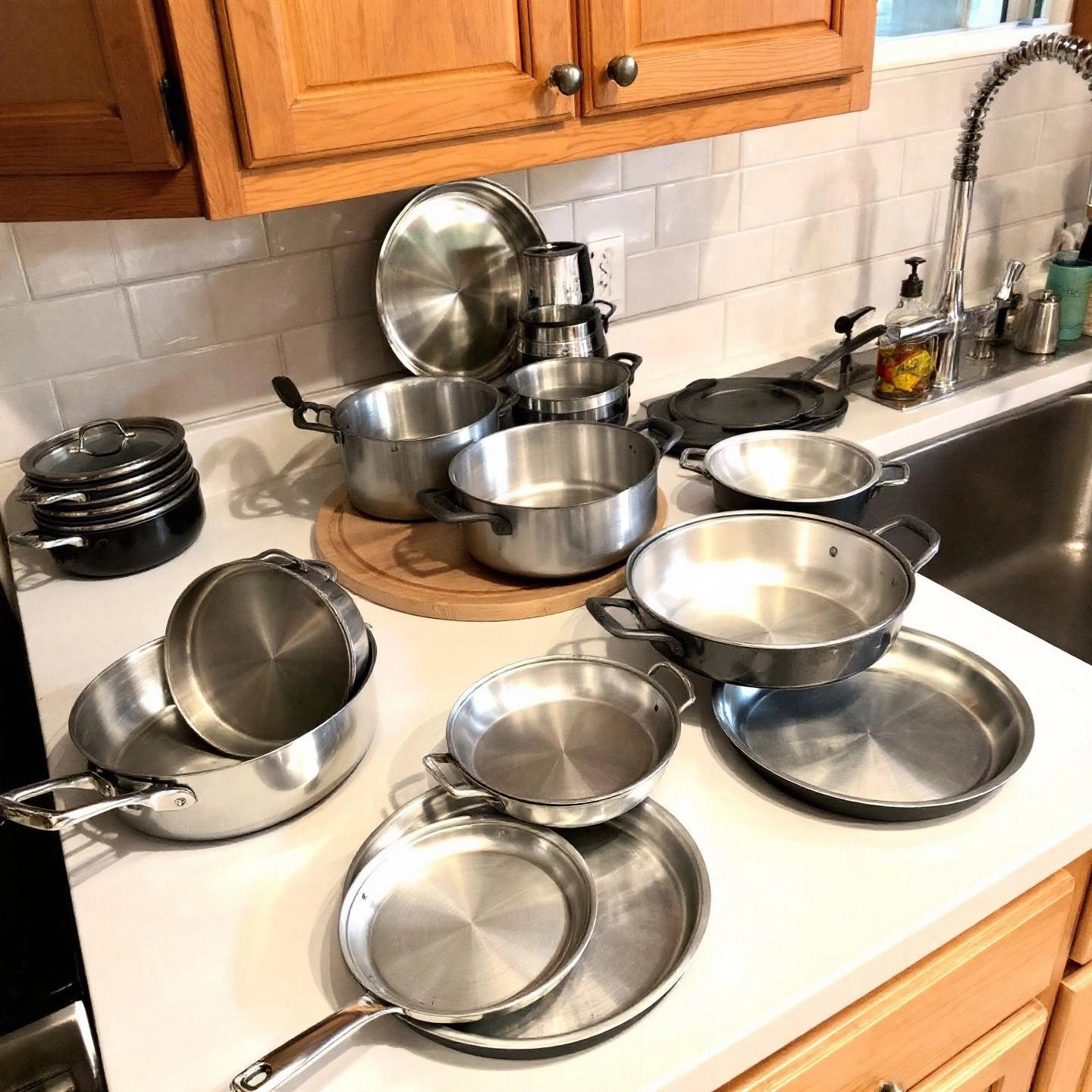
Ever found yourself staring at a stack of pans, wondering which size is best for your next meal? Picking the right aluminum pan sizes can make all the difference in your cooking results—whether you’re prepping a quick dinner, baking a family-sized casserole, or freezing leftovers for later. And don’t forget about lids: the right fit helps lock in moisture, control heat, and keep your food fresh. Let’s break down how to match pan size and lid for every kitchen scenario.
Sounds complex? It’s easier than you think. Start by considering three key factors:
Here’s a quick guide to common aluminum pan sizes and their best uses:
| Pan Size | Typical Dimensions | Best For |
|---|---|---|
| Small (8–9 inches) | 8"–9" round or square | Individual servings, side dishes, brownies, small casseroles |
| Medium (11–12 inches) | 11"–12" round or rectangular | Chicken breasts, fish fillets, roasted vegetables, lasagna for 2–4 people |
| Large (13–16 inches or full size) | 13"–16" rectangular, 20 3/4" x 12 3/4" full-size | Roasting turkeys, large casseroles, big batch cookies or cakes, family gatherings |
| Loaf Pans | 1–5 lb. capacity | Breads, meatloaf, pound cake |
| Pie Pans | 5"–12" diameter | Fruit pies, quiches, tarts |
For catered events or buffets, full-size pans (20 3/4" x 12 3/4") are a go-to for large roasts and serving big portions, while half-size pans (12 3/4" x 10 3/8") are perfect for casseroles or salads. Third-size pans (12 3/4" x 6 7/8") work well for side dishes or smaller entrees (WebstaurantStore).
Imagine baking a lasagna in a pan that’s too small—it overflows, cooks unevenly, and makes a mess. Too large, and your food may dry out or brown too quickly. The right size ensures even cooking, ideal texture, and easy cleanup. Always check your oven’s interior dimensions before choosing a larger pan, and consider your storage space for bulkier items.
Ever wondered if you really need an aluminum pan with lid? Here’s why lids matter:
Disposable pans often come with snap-on or foil lids that make cleanup and storage a breeze. For home cooks, investing in a few reusable lids for your favorite pan sizes can simplify both cooking and storing meals.
Choosing the right aluminum pan size and lid combination doesn’t have to be a guessing game. With these tips, you’ll notice smoother meal prep, better results, and less kitchen stress. Next, let’s see why bakers swear by aluminum pans for cakes, breads, and more.
Ever wondered why so many professional and home bakers reach for an aluminum baking pan when whipping up cakes, breads, muffins, and pies? Imagine pulling a golden, evenly-baked cake from the oven—no burnt edges, no undercooked centers. That’s the magic aluminum brings to the world of baking. But what makes these pans so special? Let’s break it down.
When you bake, even heat distribution is everything. Aluminum stands out as one of the best thermal conductors among common bakeware materials. This means it absorbs and spreads heat quickly and evenly, minimizing hot spots that can cause uneven baking or browning. Whether you’re baking a batch of muffins or a delicate sponge cake, you’ll notice that aluminum pans help your baked goods rise uniformly and develop a beautiful, consistent crust.
Not all aluminum pans are created equal. Bakers have a range of options to suit every recipe and preference. Here’s a quick guide to the most popular types—and when to use each:
Why do bakers keep coming back to aluminum?
In short, the aluminum baking pan is a true workhorse—delivering reliable results for cakes, breads, muffins, and pies. With the right pan and a few simple tips, you’ll notice your baked goods turning out better than ever. Next, let’s explore how aluminum pans shine beyond baking, especially for roasting and everyday meals.
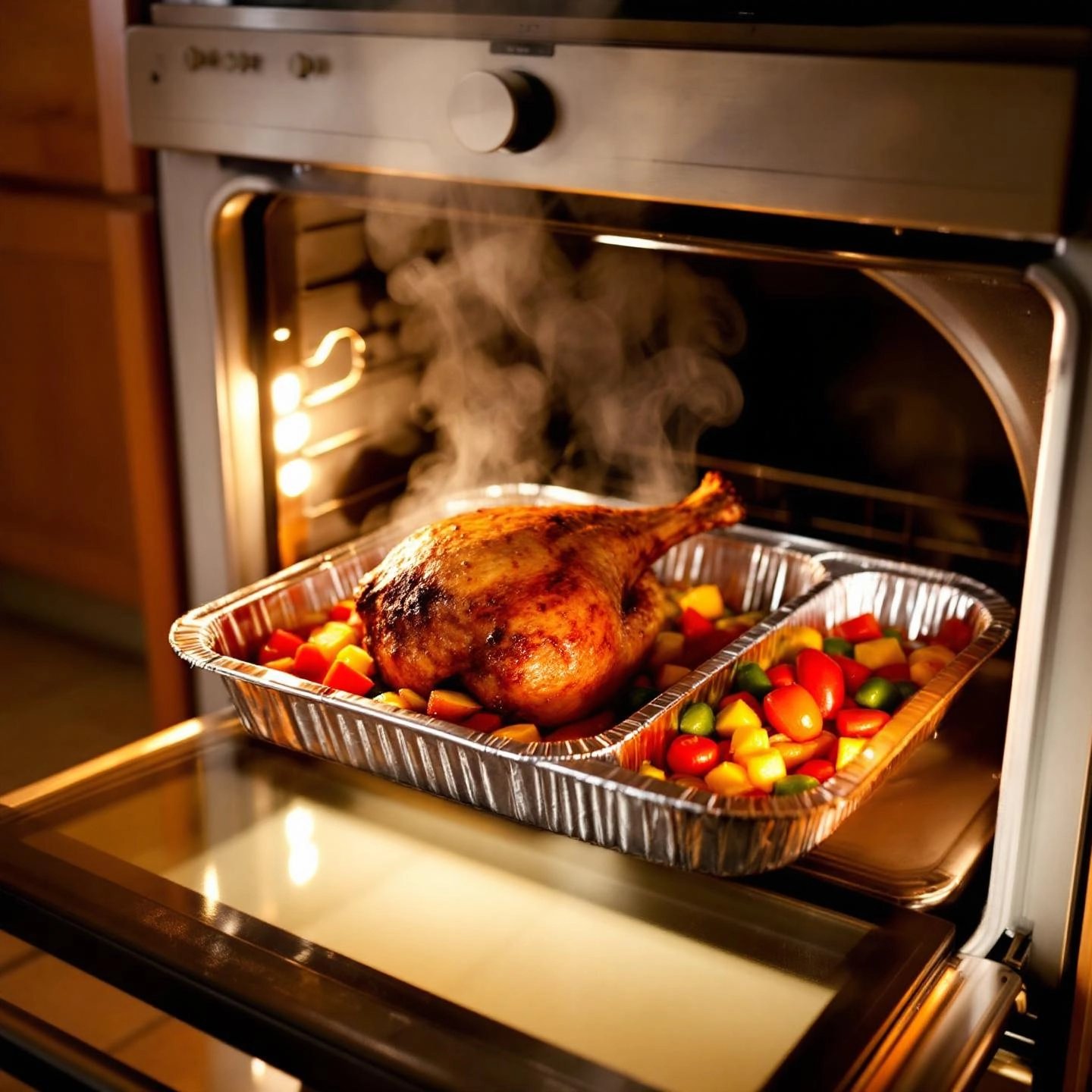
When you think of a hearty Sunday roast or a quick one-pan dinner after a busy day, what kind of cookware comes to mind? If you imagine a lightweight pan that heats up fast, delivers even browning, and is easy to handle, then you’re picturing the classic aluminum roasting pan. But did you know that aluminum cooking pans go far beyond just roasting? Let’s explore how these versatile pans can transform your everyday meals and why quality matters for lasting performance.
Imagine pulling a perfectly golden roast chicken or a tray of caramelized vegetables from the oven—no burnt spots, no undercooked centers. That’s the advantage of an aluminum roasting pan. Here’s why cooks of all levels reach for aluminum when roasting meats, poultry, and veggies:
Think aluminum roasting pans are just for holidays? Think again! These pans shine for a wide range of daily dishes. Here are some creative ways to use aluminum cooking pans:
Not all aluminum pans are created equal. The quality of the aluminum—and the expertise behind its production—directly affects how well your pan performs and how long it lasts. Industry leaders like Shengxin Aluminum use advanced manufacturing processes to ensure their pans are both durable and efficient. Their precise extrusion, anodizing, and finishing techniques result in pans that resist warping, distribute heat evenly, and withstand years of regular use.
"Investing in a high-quality aluminum roasting pan pays off in better cooking results, easier handling, and a longer lifespan for your cookware."
As you experiment with roasting, baking, and one-pan meals, you’ll notice how the right aluminum pan makes meal prep simpler and more rewarding. Next, we’ll look at the unbeatable convenience of disposable foil pans—perfect for parties, potlucks, and quick cleanups.
When you’re hosting a potluck, prepping for a backyard BBQ, or planning a big family gathering, who wants to stress over cleanup? That’s where disposable aluminum pans and aluminum foil pans shine. Imagine serving your favorite lasagna or brownies in a pan you don’t have to scrub afterward—just serve, enjoy, and toss or recycle. But the perks go beyond convenience. Let’s break down why these pans are a staple for home cooks, caterers, and anyone who loves easy entertaining.
Ever wondered what happens to those pans after the party? Here’s the good news: aluminum foil pans are 100% recyclable—but only if they’re clean and free of food residue. Before tossing them in the recycling bin, give pans a quick wash to prevent contamination of the recycling stream. Some local programs even have special drop-off points or guidelines, so it’s worth checking with your community recycling center.
Recycling aluminum saves up to 95% of the energy needed to produce new aluminum, making it an eco-friendly choice for disposable cookware (KitchenDance).
In short, disposable aluminum pans offer unbeatable convenience for gatherings and busy kitchens—just remember to double up for support, keep an eye on baking times, and recycle responsibly. Next, we’ll explore how to clean and care for all your aluminum pans to keep them performing their best.
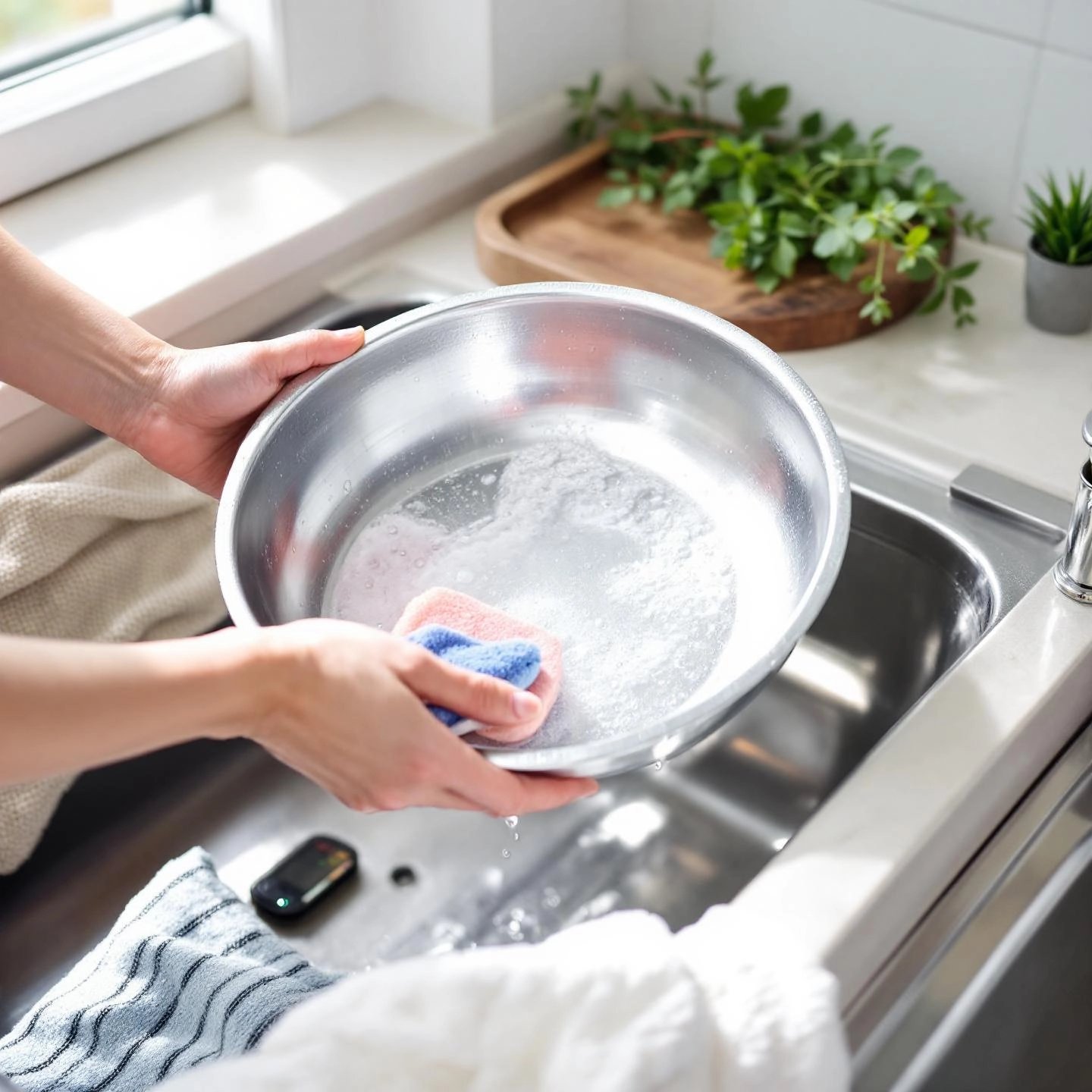
Ever pulled out your favorite aluminum pan only to find it clouded, darkened, or stubbornly stained? You're not alone. Cleaning aluminum pans can feel tricky, especially when you want to preserve their shine and performance for years to come. So, what's the best way to keep your cookware looking and cooking its best? Let's break it down with practical tips, clear do's and don'ts, and step-by-step guidance for every type of aluminum pan in your kitchen.
When regular washing isn’t enough, here’s how to clean aluminum pans that are blackened, cloudy, or have burnt-on food:
If your pan is warped, severely scratched, or has persistent corrosion—or if food keeps sticking despite cleaning—it may be time for a replacement. Damaged pans can cook unevenly and may pose safety concerns.
| Do | Don't |
|---|---|
| Hand wash with mild soap and soft sponge | Use bleach or harsh chemicals |
| Dry immediately after washing | Put in dishwasher |
| Use baking soda, vinegar, or cream of tartar for stains | Scrub with metal pads or utensils |
| Soak overnight for burnt-on food | Store food in pan for long periods |
With the right cleaning habits, your aluminum pans will stay bright, functional, and ready for every meal. Up next, we’ll wrap up with key takeaways and tips for making the most of your pans for years to come.
When you look back at the meals you’ve prepared—whether it’s a perfectly browned loaf of bread, a sizzling roast, or a quick weeknight stir-fry—what’s the one piece of cookware that consistently delivers? For many cooks, the answer is a trusted aluminum pan. But what truly sets these pans apart, and how can you ensure you’re getting the most out of them for years to come?
Ever wondered why some aluminum pans outperform others year after year? The secret often lies in advanced manufacturing. Companies like Shengxin Aluminum bring decades of expertise from high-precision industries—such as rail transit and automotive—into the kitchen, producing cookware-grade aluminum with superior strength, purity, and reliability. This means your pans are engineered not just for performance, but for safety and longevity as well.
"Every time you reach for an aluminum pan, you’re using a tool shaped by centuries of innovation and refined by today’s best technology. That’s the legacy—and the future—you hold in your hands."
With the right aluminum pans and care routine, you’re equipped to tackle any recipe with confidence. Whether you’re searching for the best aluminum pan for baking or a reliable everyday workhorse, remember that quality, maintenance, and smart selection are your keys to success. Embrace the versatility and value of aluminum cookware—and let every meal be a testament to your kitchen know-how.
Happy cooking, and may your aluminum pans serve you well for many delicious years to come!
Yes, aluminum pans are safe for everyday cooking when used properly. Modern anodized and coated aluminum pans offer a non-reactive surface, greatly reducing the chance of aluminum leaching into food, even with acidic ingredients. For extra safety, avoid using old or damaged pans for acidic dishes and never store food in aluminum pans for long periods.
Aluminum pans heat up quickly, are lightweight, and typically cost less, making them ideal for fast, even cooking and baking. Stainless steel pans are more durable, non-reactive, and better for browning and simmering. Some pans combine both materials for improved performance.
Hand wash aluminum pans with mild soap and a soft sponge. Avoid harsh chemicals, bleach, and abrasive scrubbers. For stains or discoloration, use a baking soda paste or a vinegar and water soak. Anodized and non-stick pans should always be washed gently by hand to maintain their surface.
Disposable aluminum pans offer convenience for parties, potlucks, and meal prep. They are lightweight, affordable, and can be recycled if cleaned. Doubling up pans or using a baking sheet underneath can prevent bending during use.
Higher-quality aluminum pans, such as those produced by industry leaders like Shengxin Aluminum, provide better heat distribution, resist warping, and last longer. Advanced manufacturing techniques and thicker gauge aluminum ensure durability and consistent cooking results.
 Onlineservice
Onlineservice 0086 136 3563 2360
0086 136 3563 2360 sales@sxalu.com
sales@sxalu.com +86 136 3563 2360
+86 136 3563 2360